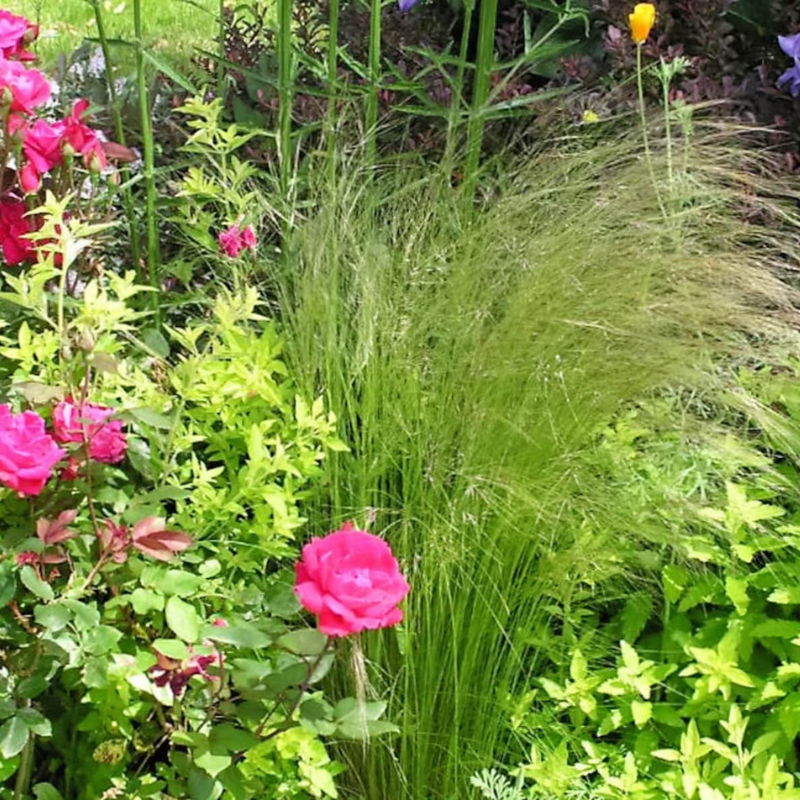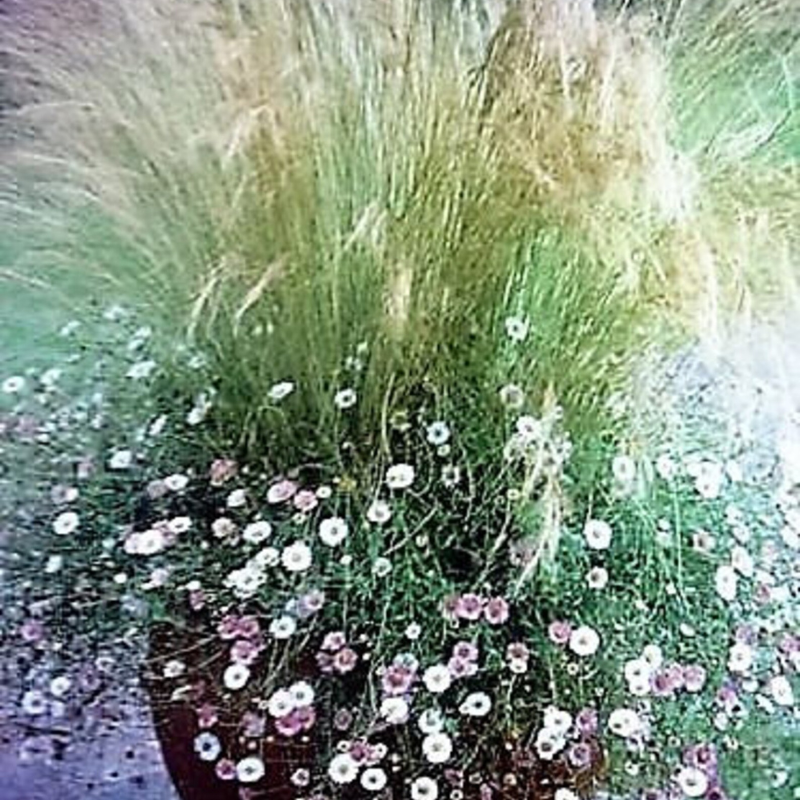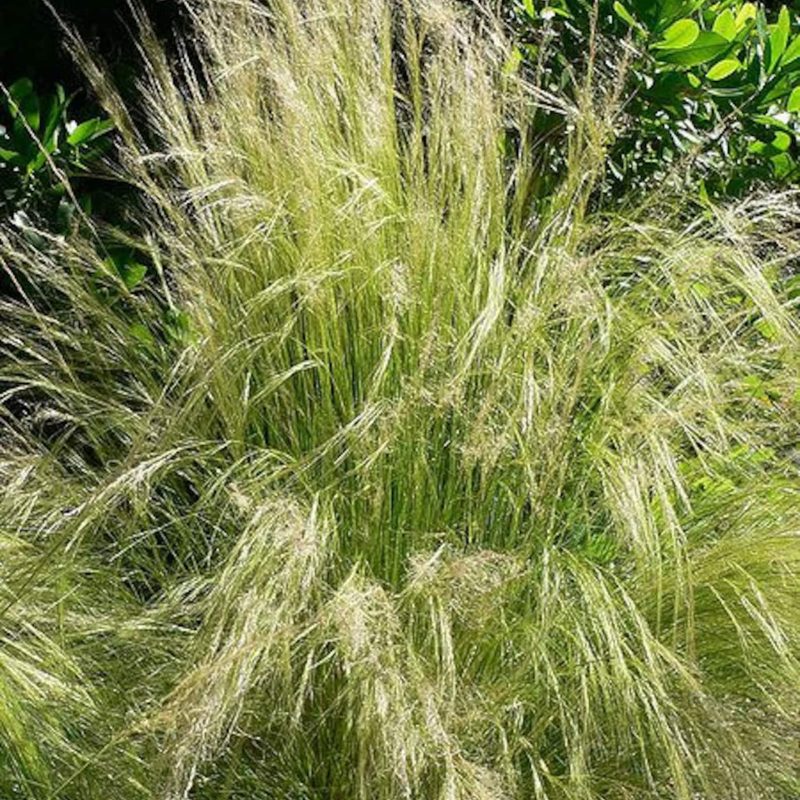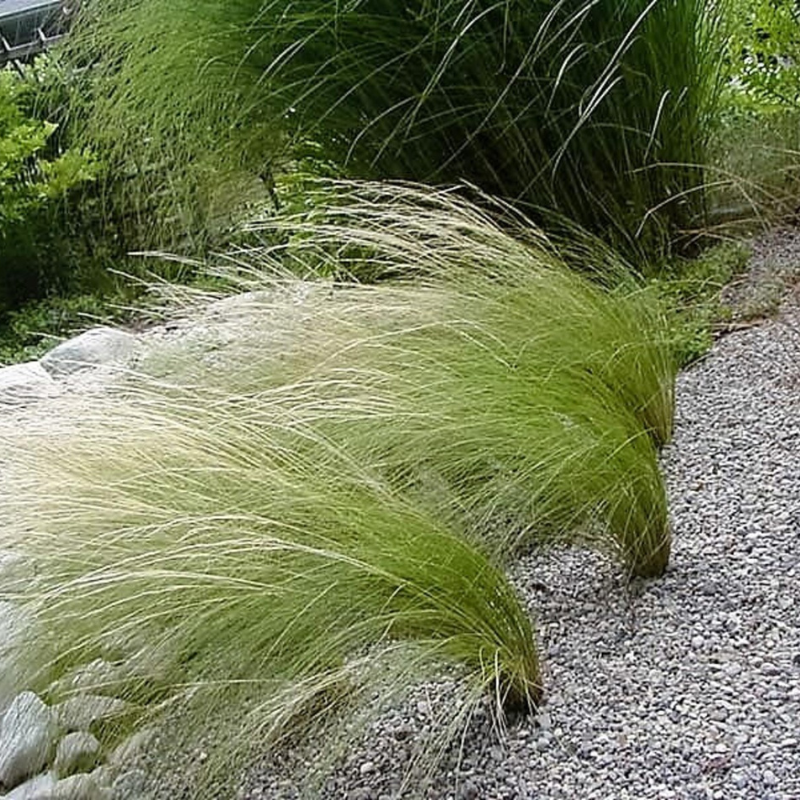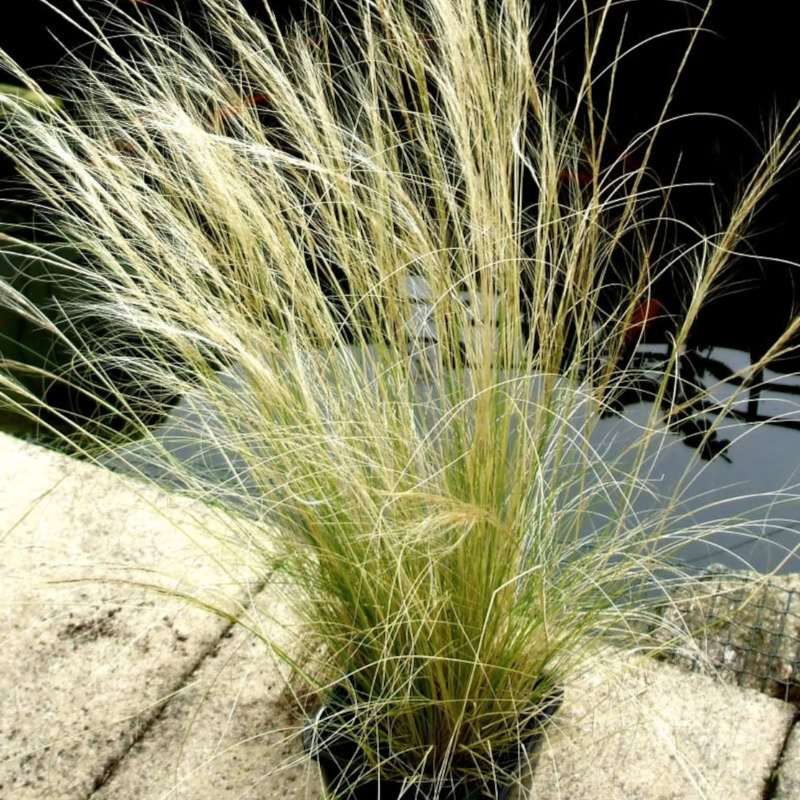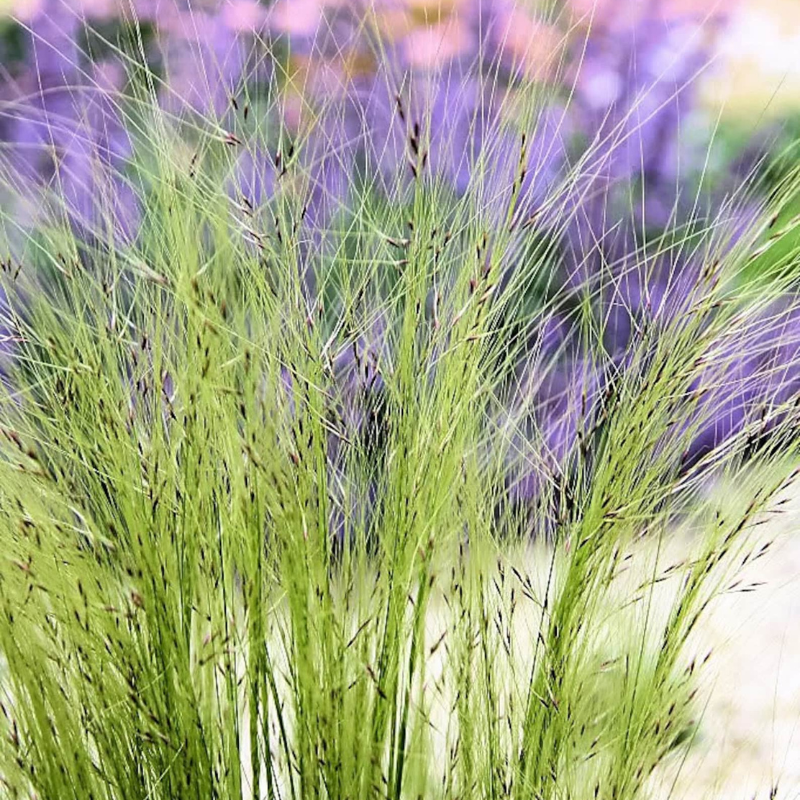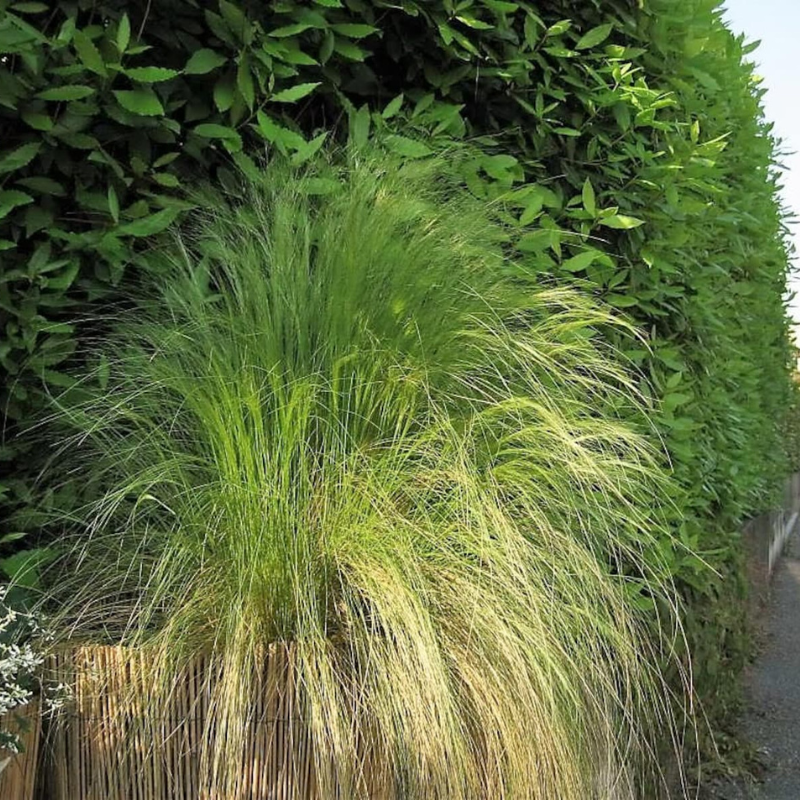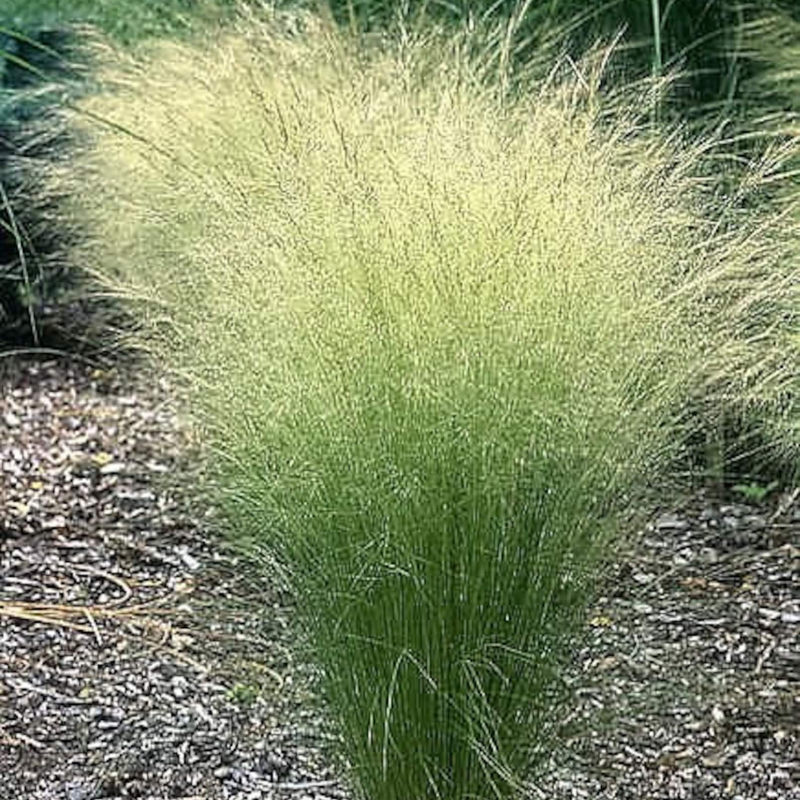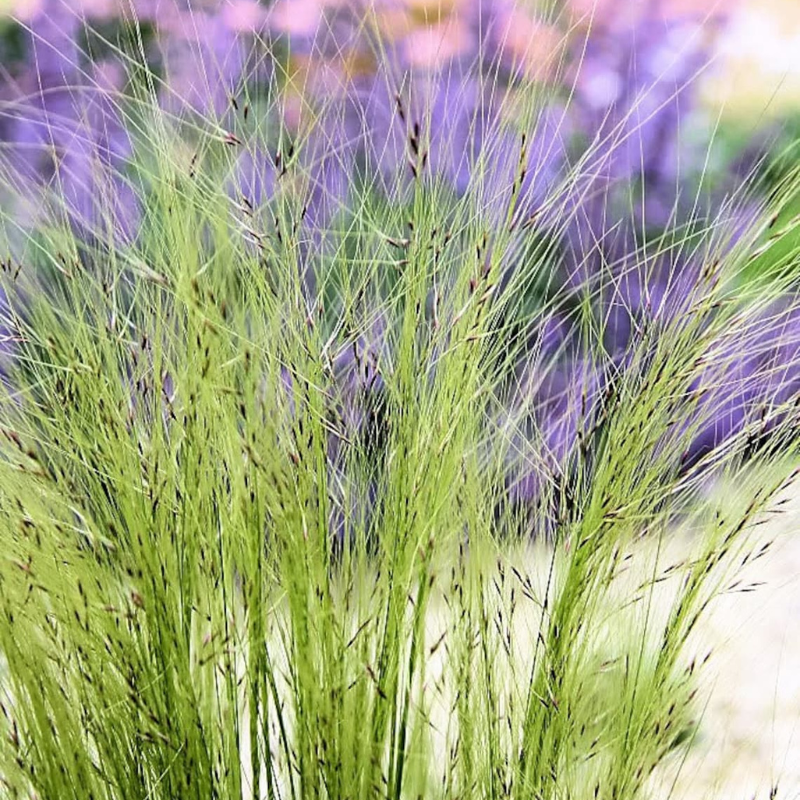- Historical context: Mexican Feather Grass, also known as Nassella tenuissima or Stipa tenuissima, is a perennial grass native to the southwestern United States, Mexico, and parts of Central America. It has been used in landscaping for its delicate, feathery appearance and its ability to thrive in various conditions.
- Geographical origination: This grass is indigenous to regions in the southwestern United States, Mexico, and parts of Central America.
- Relevant cultural significance: Mexican Feather Grass is often used in ornamental gardening and landscaping due to its graceful, flowing appearance. It has become popular in xeriscaping, which is a landscaping method that reduces or eliminates the need for irrigation.
- Time period of discovery: The exact time period of discovery is not well-documented, but it has been used in traditional landscaping for many years.
- Original habitat: It typically grows in arid and semi-arid regions, often found in grasslands and open woodlands.
- Notable historical uses: Historically, it has been used primarily for ornamental purposes in gardens and landscapes.
- Ideal temperature range: Mexican Feather Grass thrives in temperatures ranging from 60°F to 80°F (15°C to 27°C).
- Soil type: It prefers well-drained soils and can tolerate poor, sandy, or rocky soils.
- Sunlight requirements: Full sun is ideal for optimal growth, although it can tolerate partial shade.
- Watering needs: This grass is drought-tolerant once established and requires minimal watering. Overwatering can lead to root rot.
- Planting season: The best time to plant Mexican Feather Grass seeds is in the spring or early fall.
- Germination time: Seeds typically germinate within 14 to 21 days under optimal conditions.
- Growth cycle duration: It is a perennial plant, meaning it will grow and return year after year.
- Common pests and diseases: Mexican Feather Grass is relatively pest and disease-resistant. However, it can occasionally be affected by rust or fungal diseases if overwatered.
- Companion planting advice: It pairs well with other drought-tolerant plants such as lavender, sage, and succulents.
- Common challenges and solutions: One common challenge is overwatering, which can lead to root rot. Ensure the soil is well-drained and avoid excessive watering. Another challenge is its potential to become invasive in some regions, so it's important to manage its spread.
- Nutritional values: Mexican Feather Grass is not typically used for nutritional purposes.
- Health benefits: There are no significant health benefits associated with this grass as it is primarily ornamental.
- Culinary uses: This grass is not used in culinary applications.
- Medicinal uses: There are no known medicinal uses for Mexican Feather Grass.
- Other unique advantages: Ornamental Appeal: Its delicate, feathery plumes add a graceful and airy texture to gardens and landscapes.
Drought Tolerance: It is highly drought-tolerant, making it an excellent choice for xeriscaping and low-water gardens.
Low Maintenance: Once established, it requires minimal care and is resistant to most pests and diseases.
